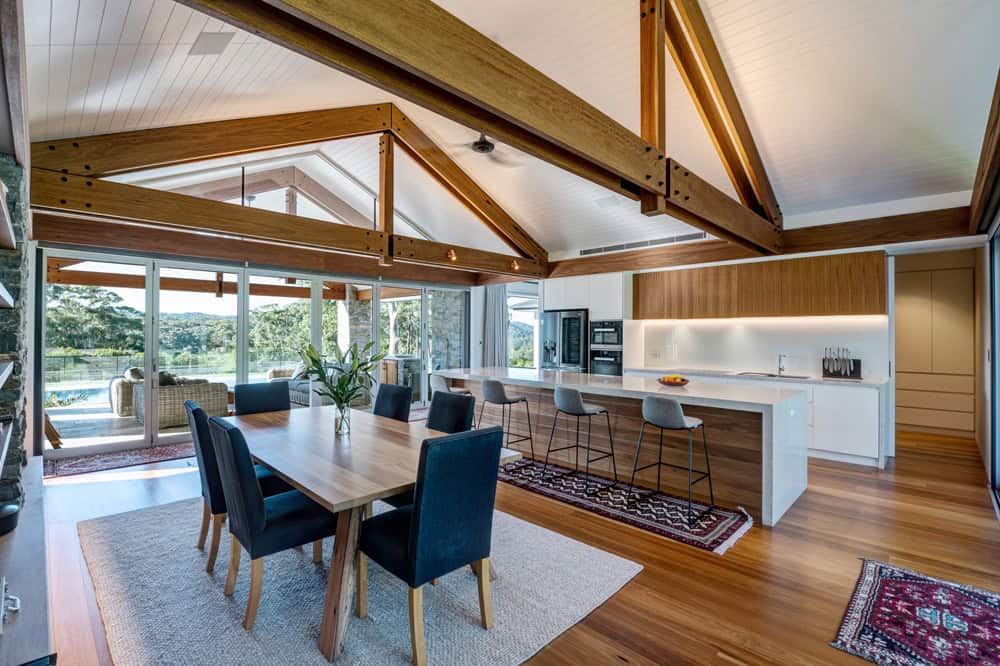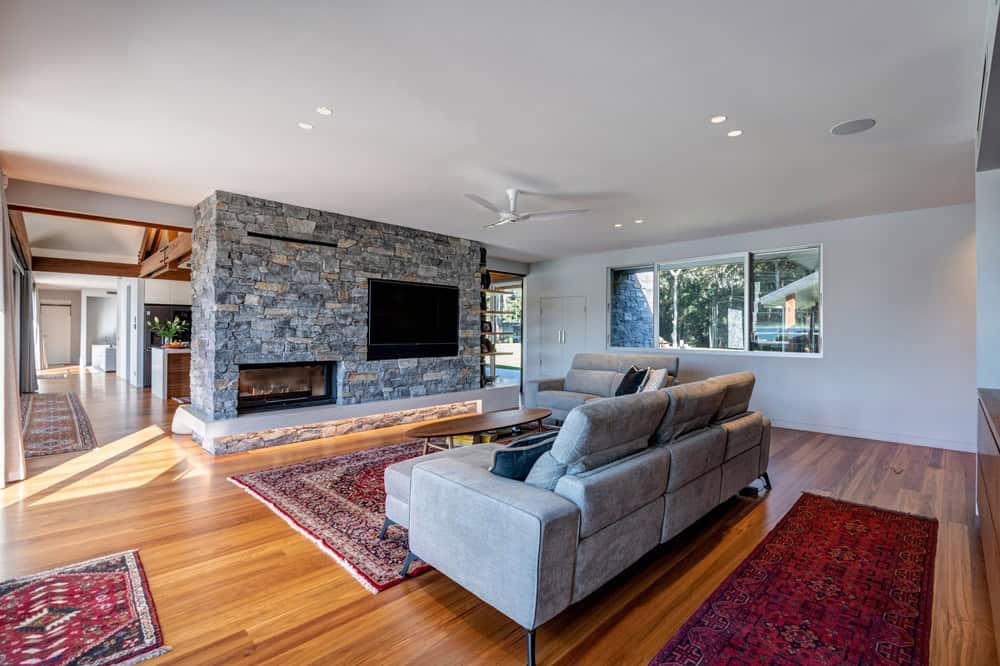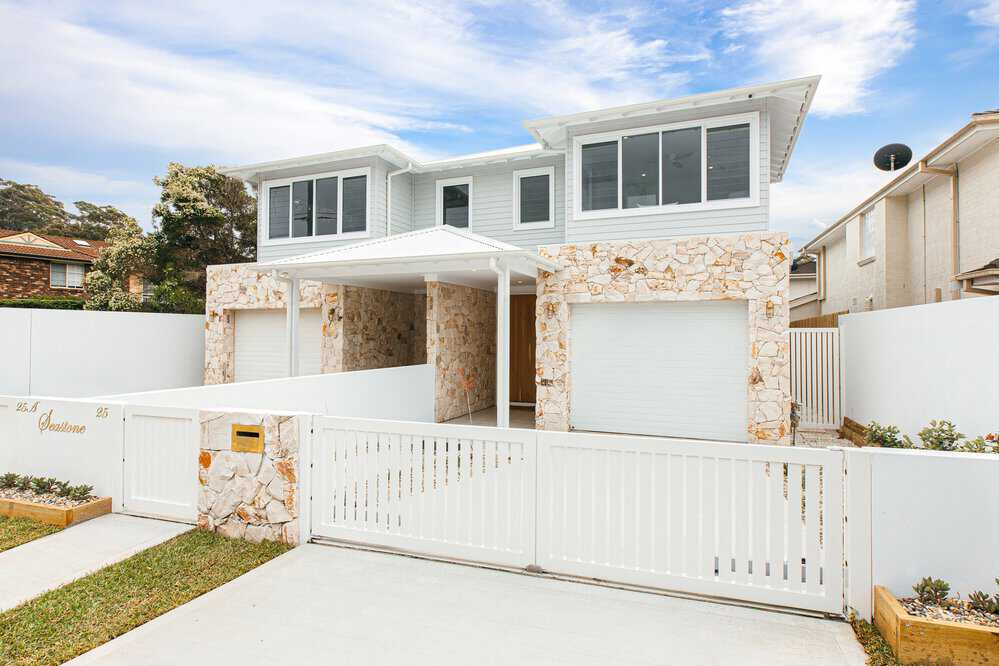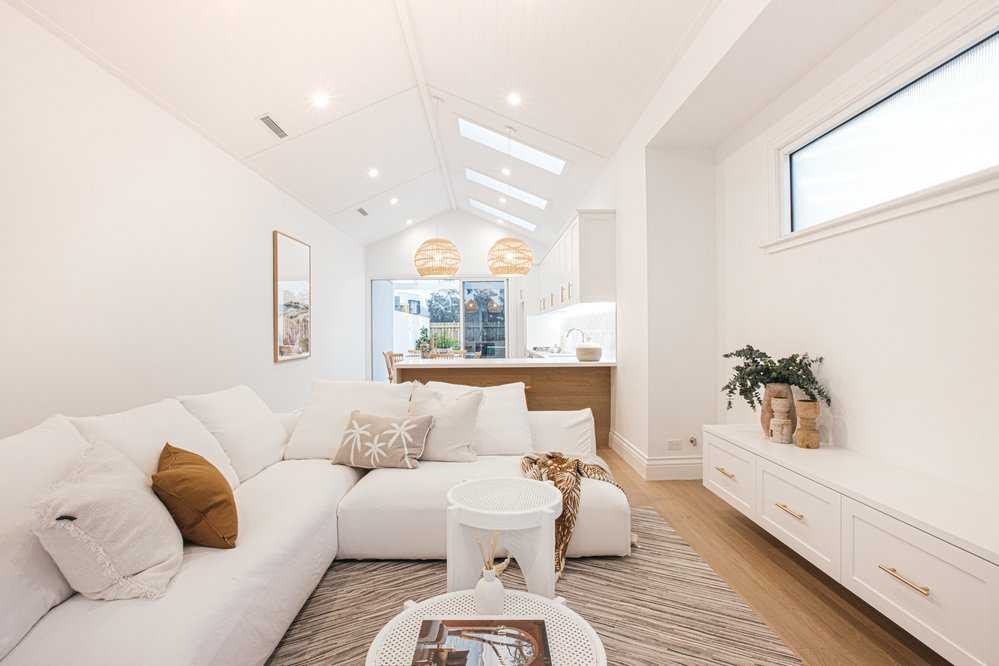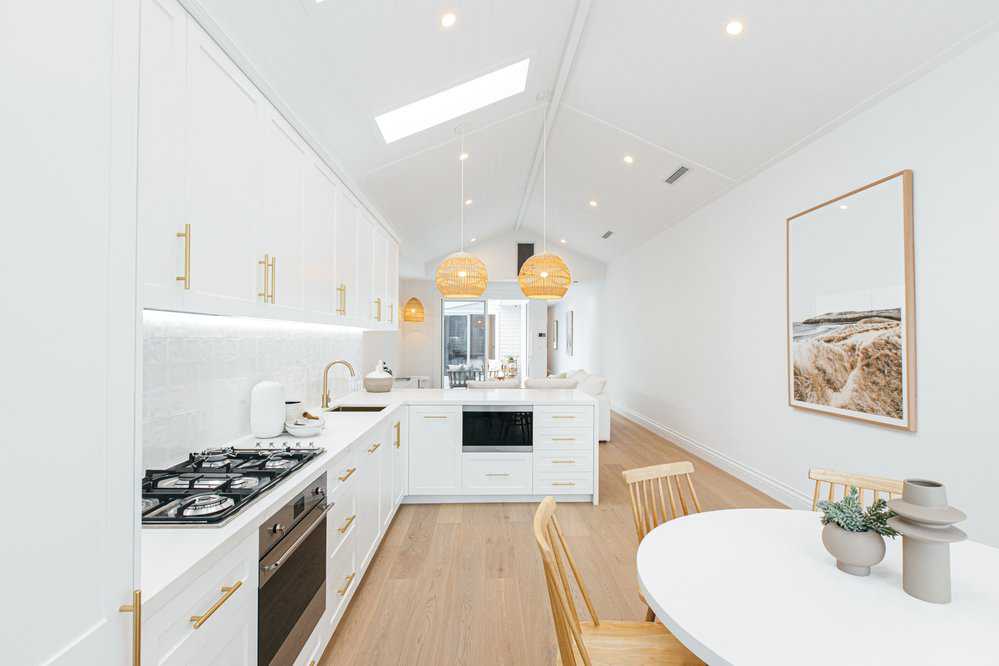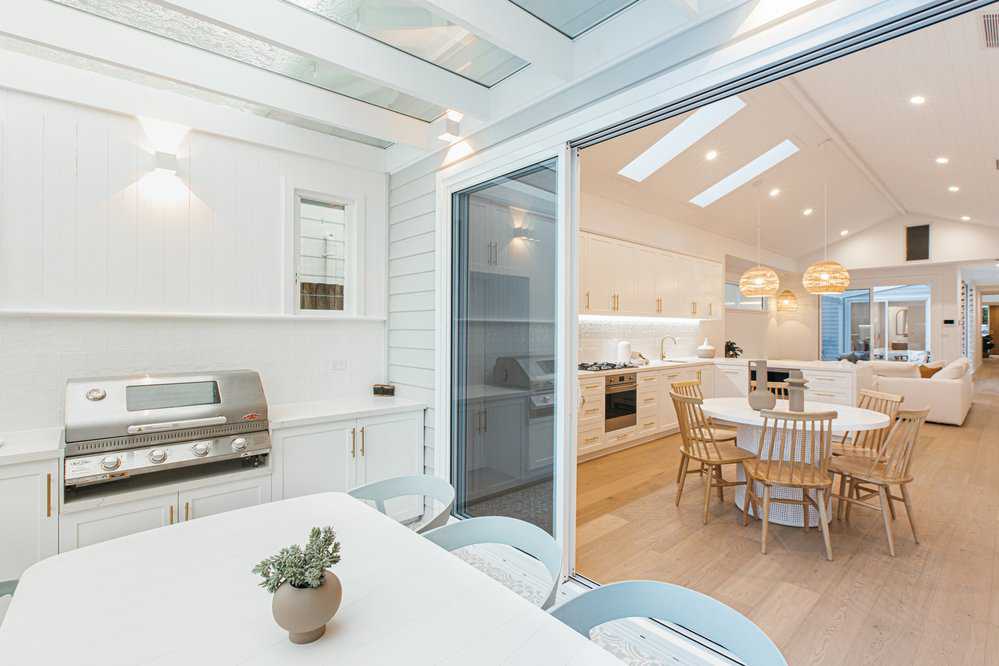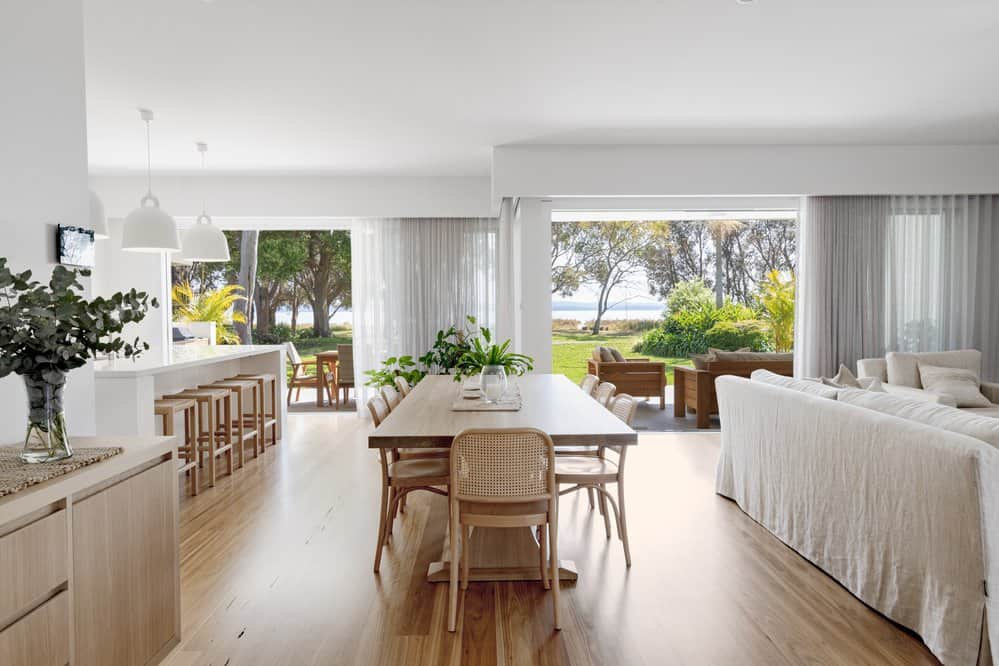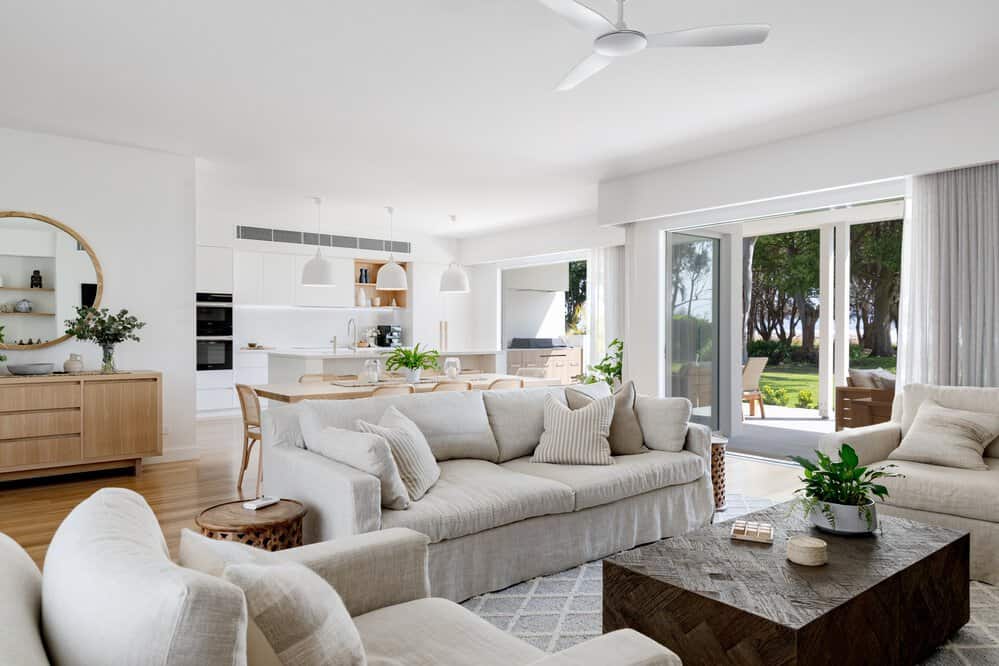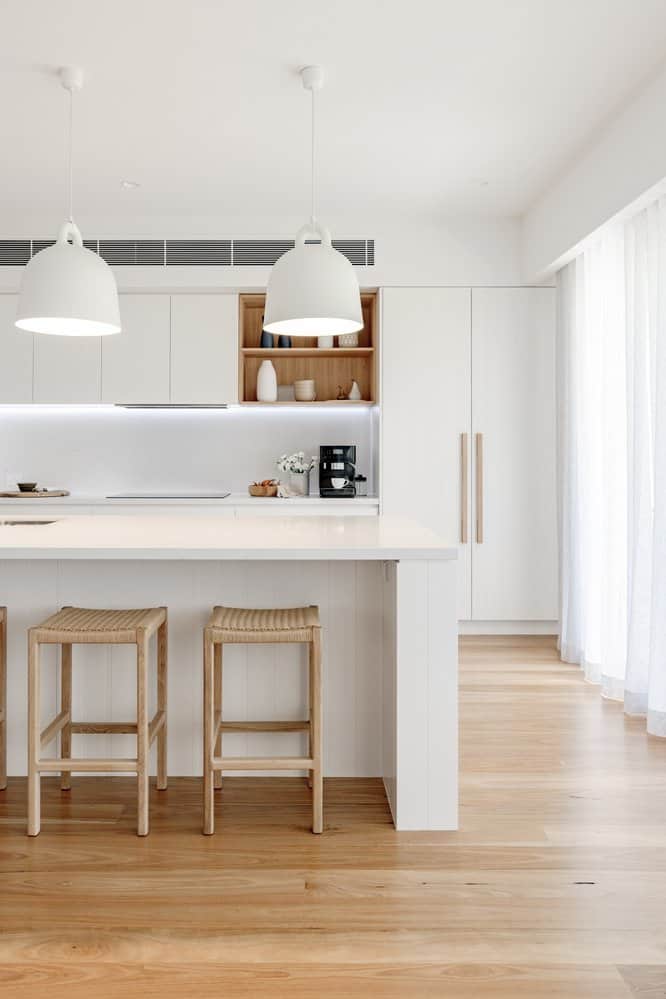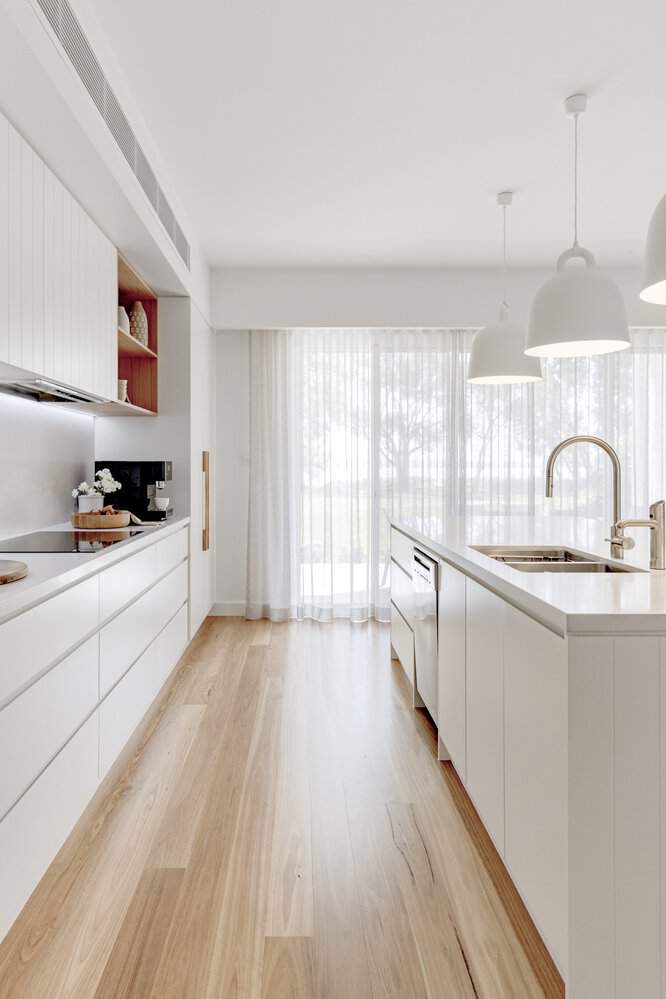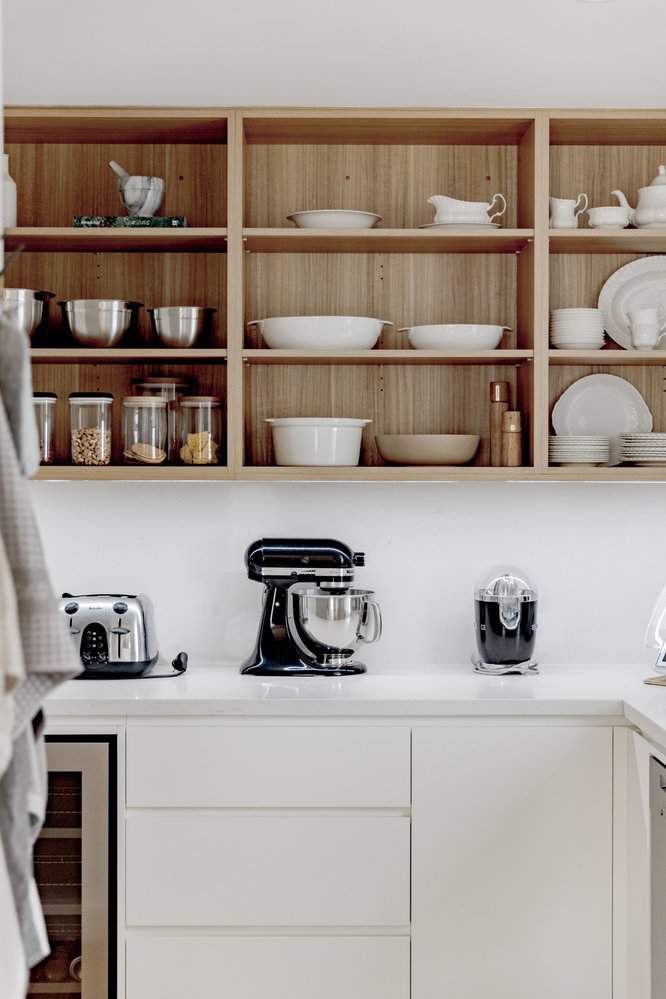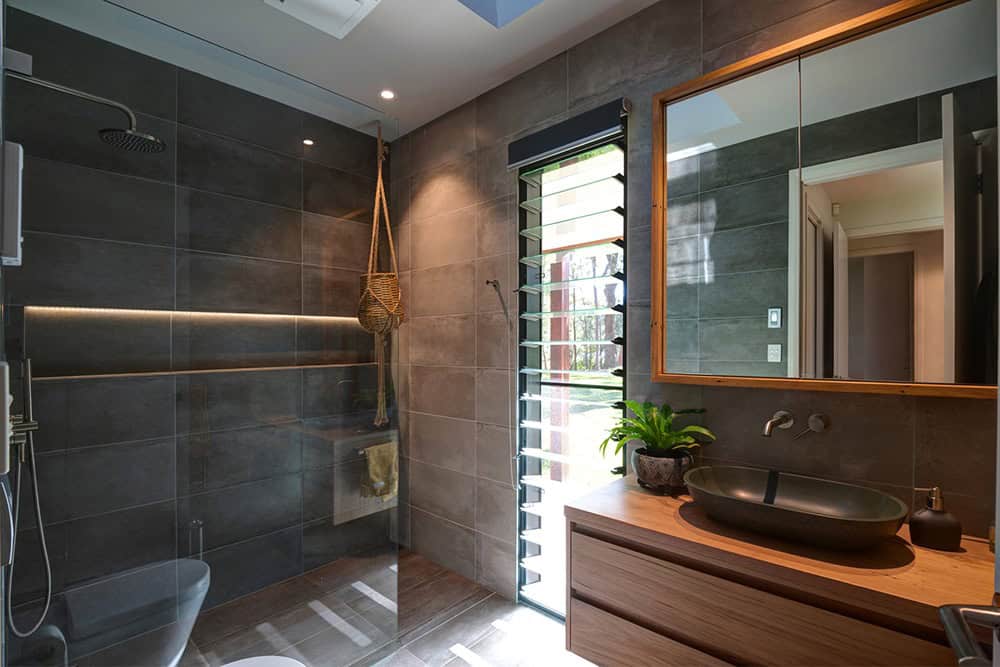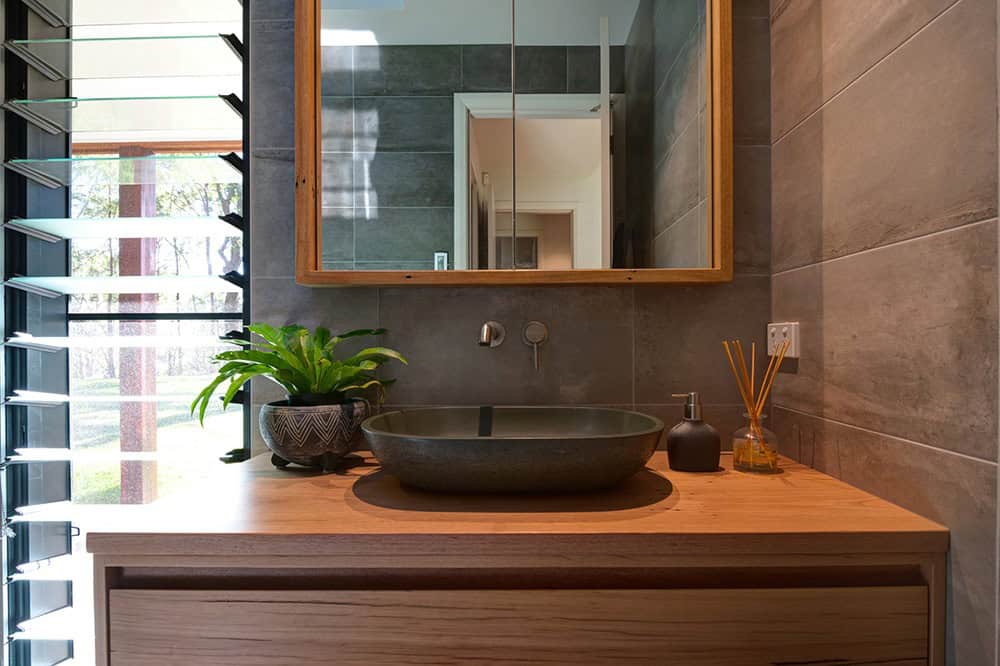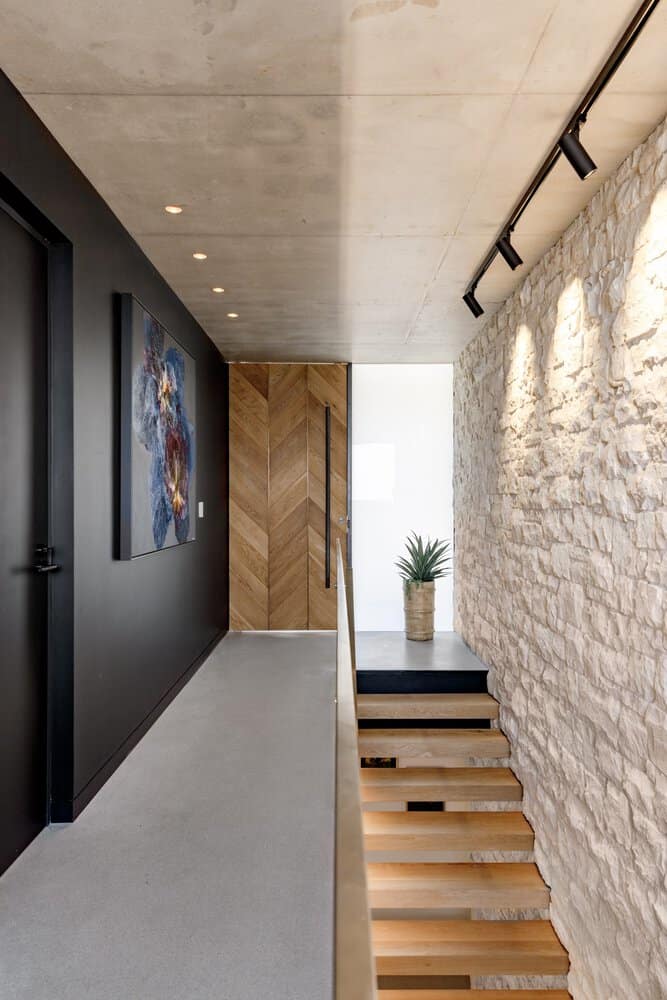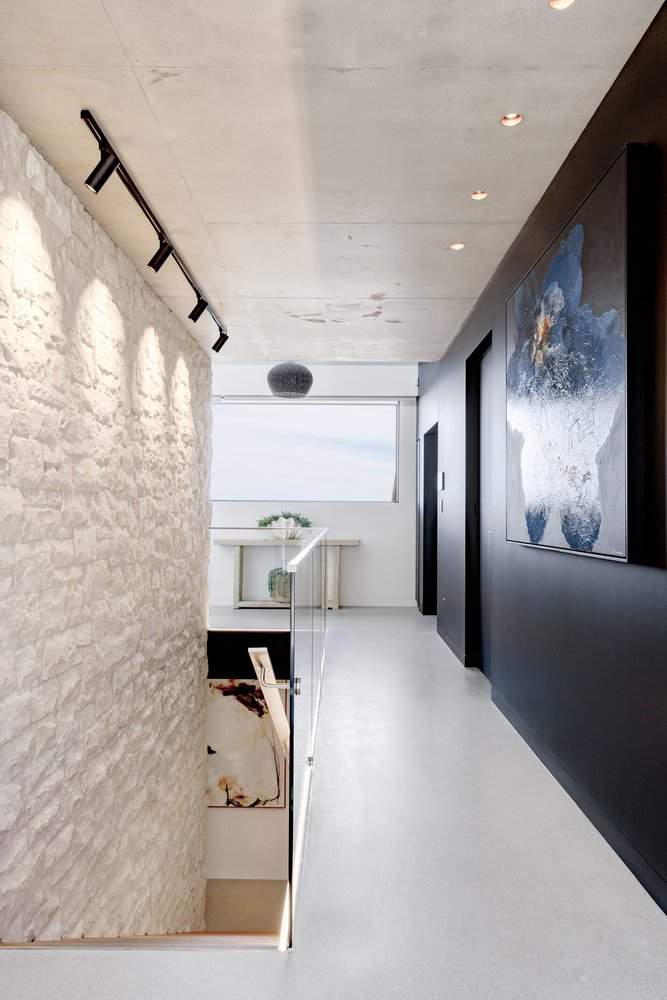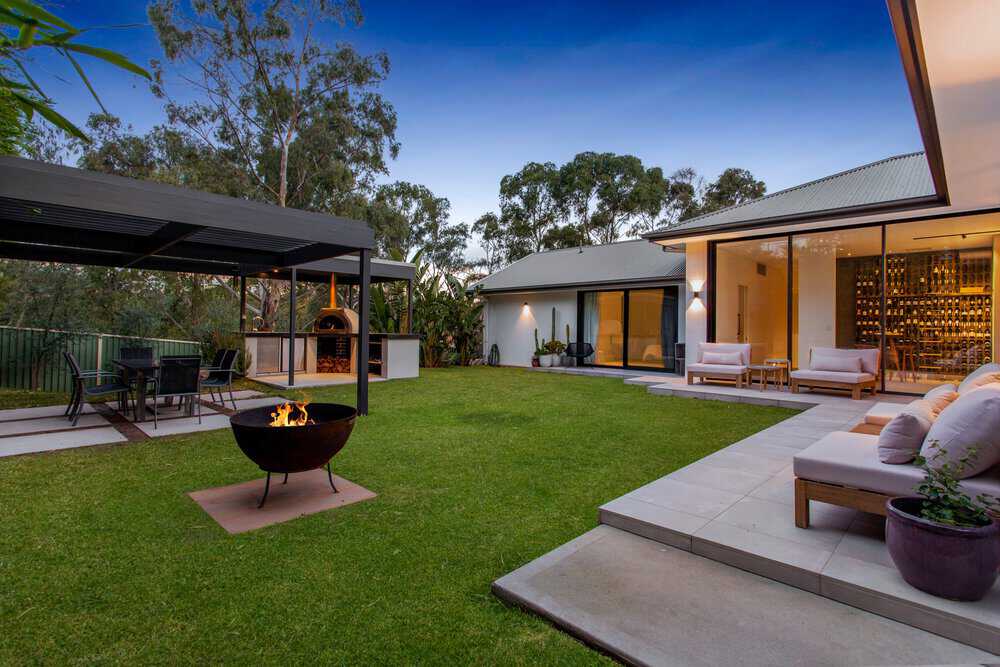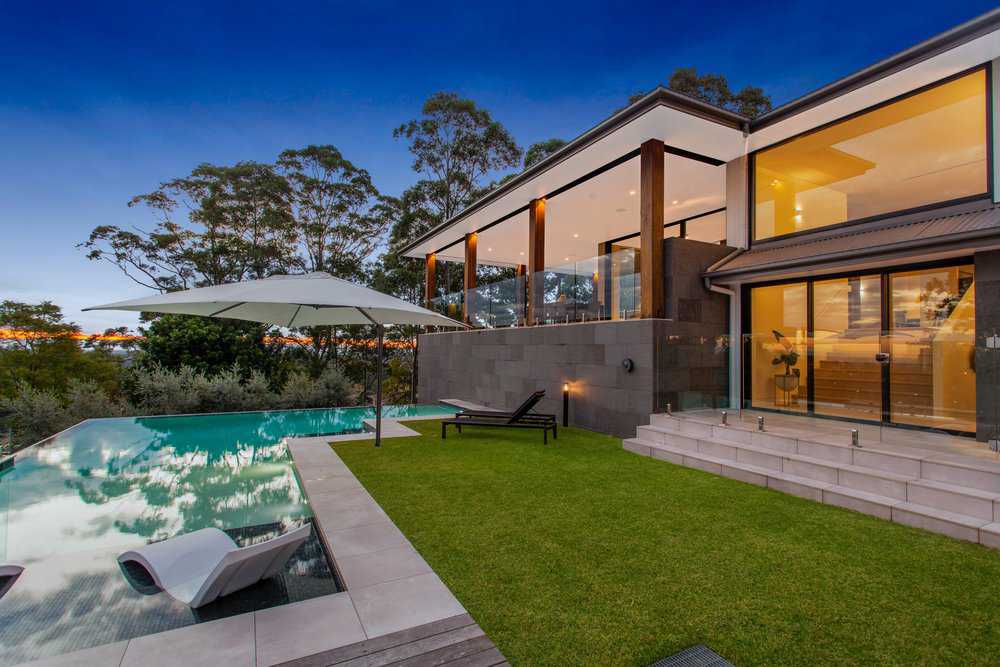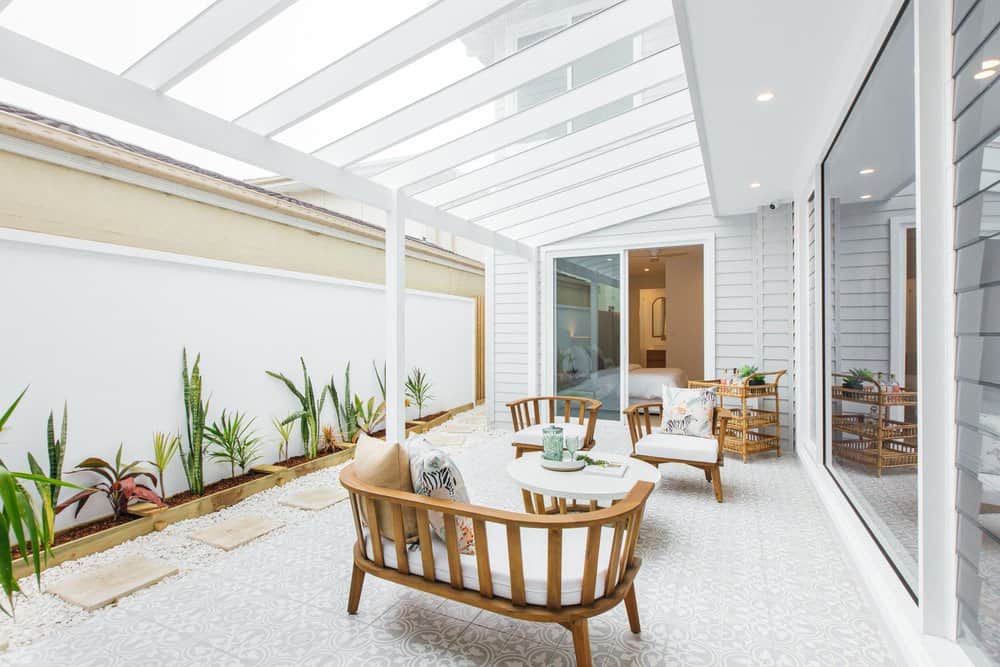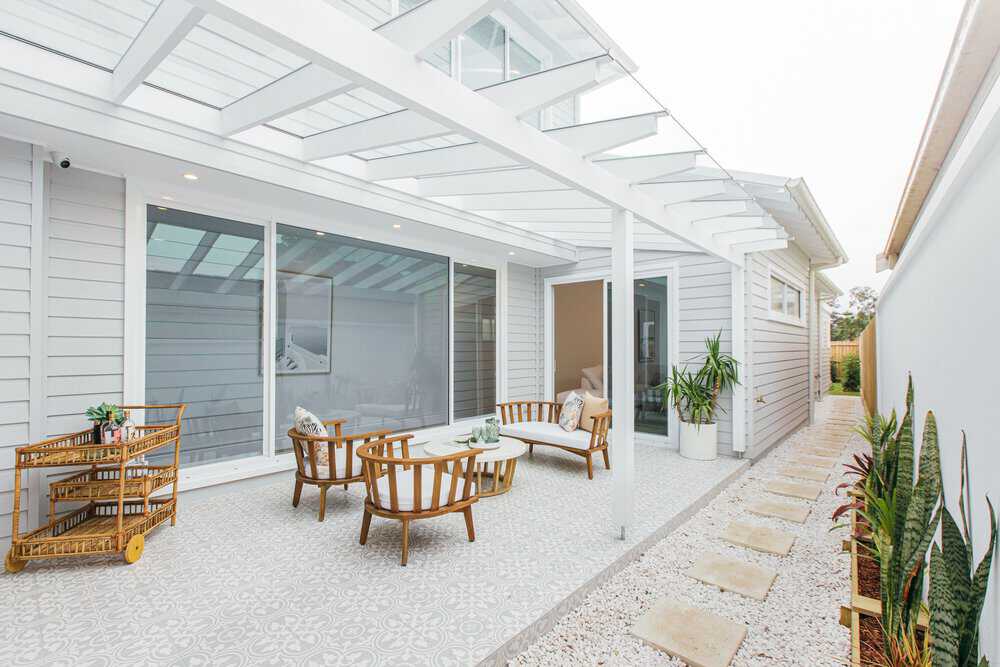COMFORTABLE HOUSE DESIGNS FOR ALL AGES
Life is a journey, and our homes should be our faithful companions along the way.
That’s where aging in place house designs come into play – carefully designed spaces that prioritize your comfort, safety, and accessibility, regardless of your age or abilities.
If you’re planning for the future or updating your current residence, incorporating universal design principles can make all the difference in creating a home that allows you to live comfortably and independently and ultimately stay in your home for longer.
Imagine a home where every room is easily navigable, from the kitchen to the bathroom. A place where you can live independently and confidently, no matter what life throws your way. That’s the power of aging in place design.
EMBRACING UNIVERSAL DESIGN IN AUSTRALIAN HOMES
At Slater Architects, we have watched universal design transform the Australian housing landscape over the years.
These innovative principles create living spaces that cater to the needs of all individuals, regardless of age or ability, fostering a sense of belonging and comfort for everyone who calls these houses home.
Universal design is about creating environments that are usable by all people to the greatest extent possible, without the need for specific or adaptive designs. It’s a concept that has gained significant traction in recent years, particularly as our population ages.
In fact, the proportion of the Australian population aged 65 years and over has increased from 12.4% in 2000 to 16.3% in 2020, making it more important than ever to prioritize accessibility in our homes.
When it comes to incorporating universal design principles into a house plan, there are several key design features to consider. These include wider doorways and hallways, step-free entrances, and open floor plans that allow for easy navigation and flexibility in use.
By incorporating these elements into the design process from the outset, we can create homes that are not only beautiful but also functional for everyone who lives in them.
AGING IN PLACE: A GROWING TREND AMONG OLDER AUSTRALIANS
One of the most significant trends we’re seeing in the housing market is the increasing desire among older Australians to stay in their homes for longer, referred to as ‘ageing in place’. In fact, studies have shown that 78-81% of Australians aged 55 years or older have a desire to live in their own homes as they age.
This preference has a significant impact on home design, as it requires us to think carefully about how we can create living spaces that support independence and comfort well into old age.
Aging in place is about more than just making a home accessible. It’s about fostering a sense of belonging and connection, no matter how our physical abilities may shift over time. Open floor plans flooded with natural light can encourage social interaction, helping to alleviate the isolation that often comes with growing older.
Creating floor plans that include master bedrooms on the same level as required amenities such as the kitchen, living areas, laundry etc, allows occupants to live comfortably on a single level even if the house has multiple levels. The additional levels can be reserved for guest bedrooms for visiting family and friends.
DESIGNING KITCHENS FOR ACCESSIBILITY AND SAFETY
The kitchen is the soul of every house, so designing kitchens with accessibility and safety as top priorities is absolutely essential.
LOWER BENCHTOPS AND DRAWERS OVER CABINETS
If you’re creating a space for older adults, think about bringing things down to their level. Swap out those hard-to-reach cabinets for easy-access drawers and lower benchtops.
When designing a kitchen that works for everyone, think beyond the benchtops. Strategically place appliances and features to make life easier.
A shallow sink basin paired with a single-lever faucet can be a game-changer for those with limited hand strength. And by positioning the oven and stovetop at just the right height, you’ll minimize accidents and maximize comfort for all your kitchen users.
BATHROOM INNOVATIONS FOR AGE-FRIENDLY HOMES
Like the kitchen, the bathroom is another space that requires careful consideration when it comes to designing for accessibility, safety and independence.
With slippery surfaces and tight spaces, bathrooms can be particularly challenging for older occupants.
WALK-IN-SHOWERS AND CURBLESS DESIGNS
One of the most important features of an age-friendly bathroom is a walk-in shower with a curbless design. By eliminating the need to step over a high threshold, these showers make it easier and safer for individuals to enter and exit the space.
Walk-in showers are just the beginning when it comes to crafting an age-friendly bathroom. Flooring materials with a non-slip surface reduce the risk of accidents, and adjustable showerheads and toilet seats ensure comfort and convenience for users of varying abilities.
With these carefully chosen elements, your bathroom becomes a welcoming space that caters to the needs of all.
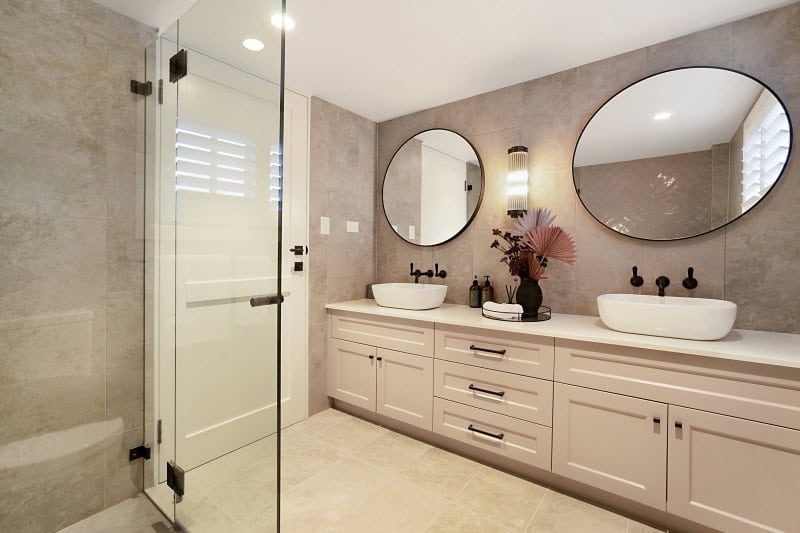
SMART TECHNOLOGY ENHANCING HOME SAFETY
Imagine a world where your home is your greatest ally in maintaining your independence. That’s the power of smart home technology for older adults.
Picture this: you wake up in the morning, and the lights gradually brighten to help you start your day. You ask your voice-activated assistant to read you the news while you enjoy your breakfast.
Later, your loved ones check in on you via a remote monitoring system, ensuring your safety without intruding on your privacy. With these cutting-edge tools, independent living has never been more achievable or empowering.
Older adults living independently can feel safer with smart home security features. Remote monitoring by loved ones means someone always has their back, even from a distance.
Motion sensors, video doorbells, and smart locks provide that extra layer of protection and peace of mind.
According to recent studies, smart home technology, such as automated lighting and voice control systems, can contribute significantly to an age-friendly home environment.
By making it easier to control various aspects of the home environment, these technologies can help to reduce the risk of accidents and falls, while also promoting greater independence and autonomy for older adults.
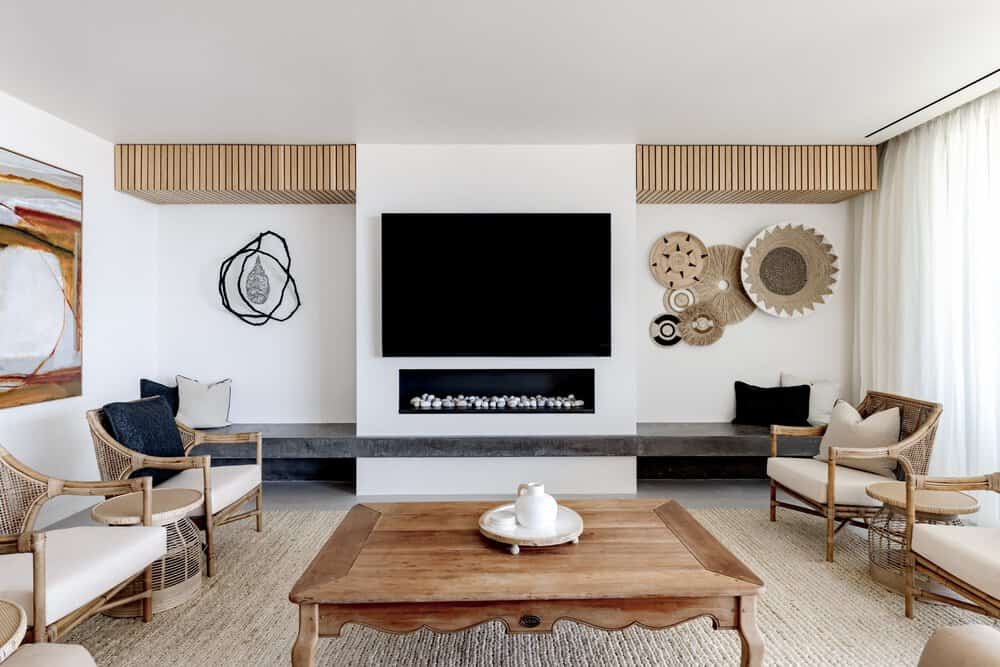
INSTALLING AN ELEVATOR IN YOUR HOME
Incorporating an elevator into your house plan can significantly enhance the accessibility and functionality of your home, ensuring that it remains a comfortable and safe living space for older adults or family members with mobility challenges.
With the growing emphasis on universal design, installing an elevator is becoming a popular choice among affluent clients who seek to age in place without compromising on luxury or style.
Elevators enhance safety by mitigating the risk of stair-related falls, ensuring a safer environment for all residents. They also contribute to the comfort of home living by enabling effortless floor-to-floor navigation.
Elevators can be especially beneficial in multi-level beachside or rural residential properties where maximizing views might necessitate taller constructions.
For those concerned about interior design continuity, today’s options range from sleek glass-paneled models to custom-designed enclosures that blend perfectly with any architectural style.
Additionally, technological advancements have made elevators more energy-efficient and quieter than ever before.
To ensure smooth integration into your home’s floor plan, collaboration with skilled architects and interior designers, familiar with aging-in-place principles is crucial.
These professionals can help address important considerations such as placement for optimal access, structural modifications needed for installation support systems like rocker panels & chair lifts), electrical requirements (for motion sensors & light switches), and selecting features (such as hand wands) that enhance usability while maintaining a luxurious feel throughout your living space.
The decision to install an elevator should align not only with current needs but also anticipate future requirements ensuring all occupants can comfortably live independently over long periods—truly embodying the essence of designing beautiful welcoming homes catered towards our aging population.
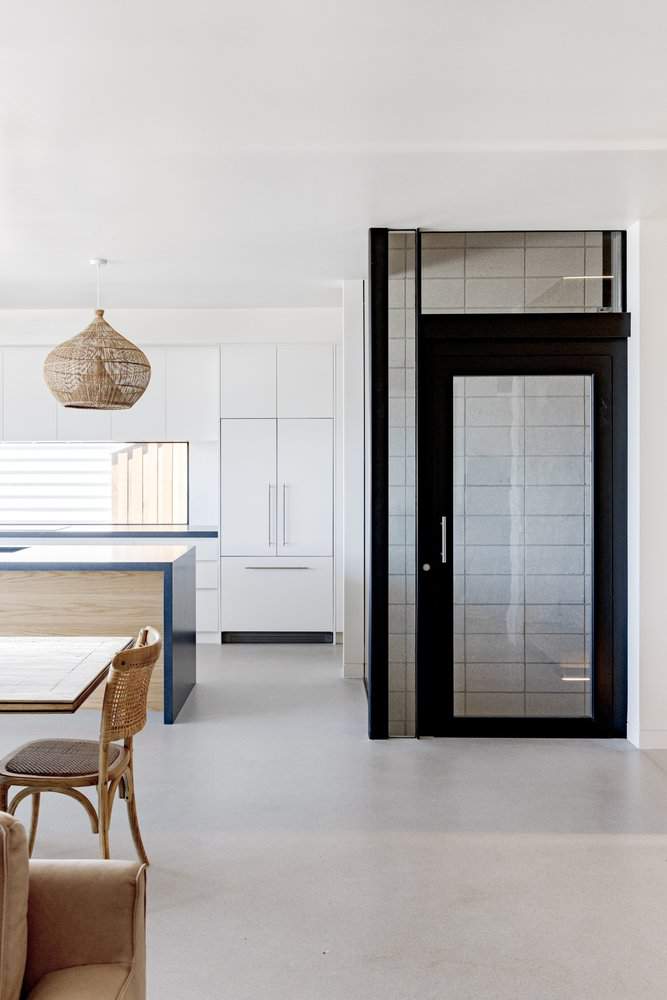
LIGHTING SOLUTIONS FOR ENHANCED VISIBILITY AND SAFETY
Proper lighting is essential for any home, but it becomes even more important as we age. As our eyesight changes over time, we may require brighter, more focused lighting to navigate our living spaces safely and comfortably.
Poor lighting can lead to falls, accidents, and other safety hazards, making it a critical consideration in any age-friendly home design.
If you’re looking to create an age-friendly home, lighting design is crucial. One of the most important things to consider is maximizing natural light. Think big windows, skylights, and any other architectural elements that can help bring the outdoors in.
In addition to natural light, it’s also important to incorporate a variety of artificial lighting sources throughout the home. This might include overhead fixtures, strip lighting in areas such as stairs, and task lighting in areas like the kitchen and bathroom.
By providing a range of lighting options, we can ensure that individuals can adjust the lighting to suit their needs and preferences, while also reducing the risk of falls and other accidents.
OUTDOOR SPACES DESIGNED FOR ACCESSIBILITY
Picture this: a beautiful garden just steps from your door, filled with fragrant flowers and a comfy place to sit. For older adults, that dream can become a reality with a few smart design choices that prioritize accessibility and comfort.
Creating a floor plan where an outdoor entertaining area or garden is on the same level as your interior living spaces is ideal to allow easy access for occupants to enjoy comfortably without risk to safety.
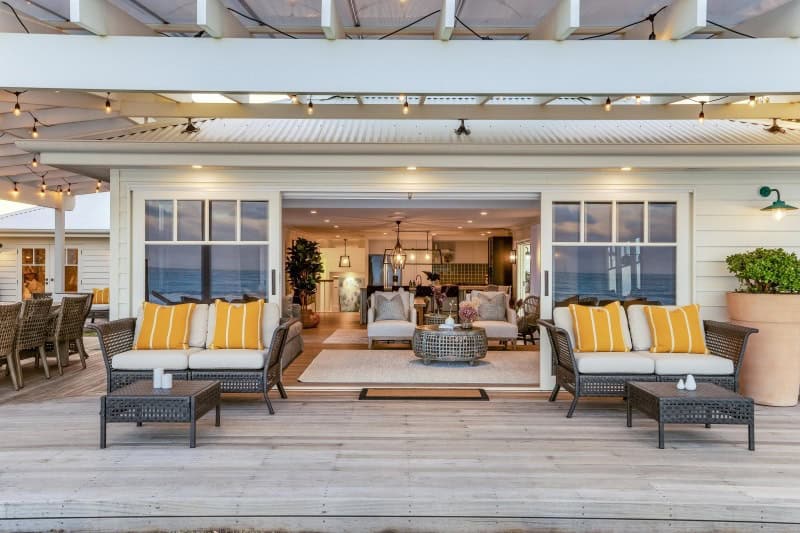
In addition to accessibility, it’s also important to consider the overall design and layout of the outdoor space. This might include incorporating plenty of seating areas, raised garden beds, and other features that make it easy and enjoyable for individuals to spend time outside.
By creating a welcoming and inclusive outdoor environment, we can help to promote physical activity, social interaction, and overall well-being for people of all ages and abilities.
FLOORING CHOICES THAT PROMOTE SAFETY AND MOBILITY
Flooring is another critical consideration when it comes to designing an age-friendly home. The right flooring choices can help to reduce the risk of falls and accidents, while also promoting ease of movement and overall comfort.
When it comes to choosing flooring for a home that’s friendly to all ages, slip-resistant and easy-to-clean materials are the way to go. By making smart flooring choices, we can help to create a safer and more comfortable home environment for older adults and those with mobility issues.
ADAPTING BEDROOMS FOR COMFORT AND SAFETY
As we age or face mobility challenges, the bedroom becomes more than just a place to sleep, it’s a space where we need to feel both comfortable and secure.
Accidents and injuries can happen more frequently in this intimate setting, making it imperative to design bedrooms with safety as a top priority without compromising on the cozy, inviting atmosphere we all crave.
MASTER SUITES ON THE MAIN LEVEL
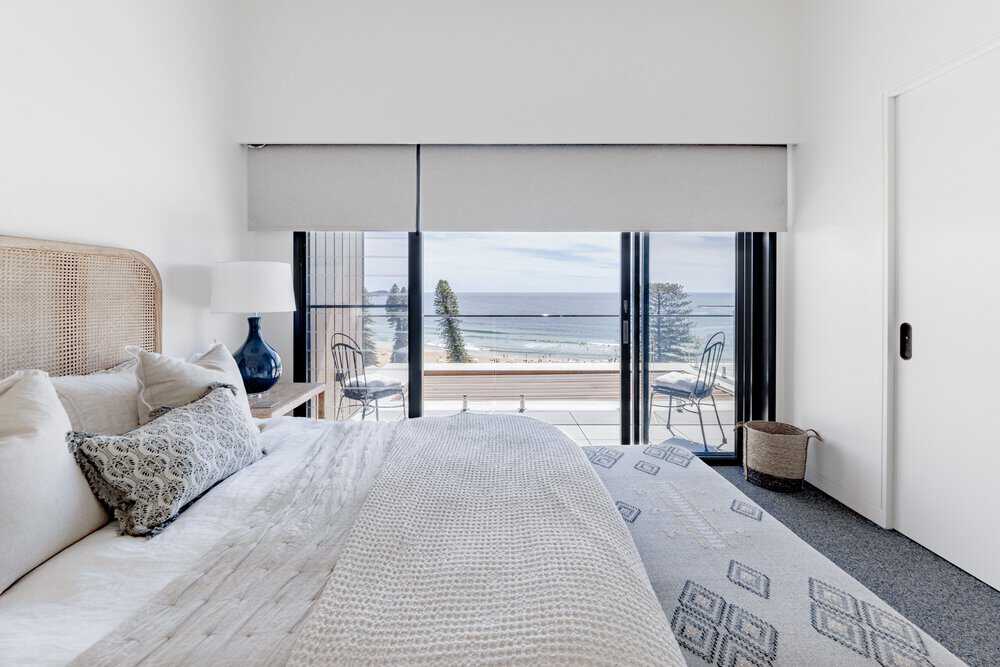
One key consideration is the location of the master bedroom. By positioning the master suite on the main level of the home, we can reduce the need for individuals to navigate stairs on a daily basis.
This is particularly important for older adults or those with mobility issues, who may find it difficult or dangerous to climb stairs regularly.
Alternatively, incorporating a lift into the design will provide access to the master bedroom from other levels without the occupant needing to use the stairs. By incorporating these elements into the design, we can create a bedroom that is both comfortable and safe for users of all ages and abilities.
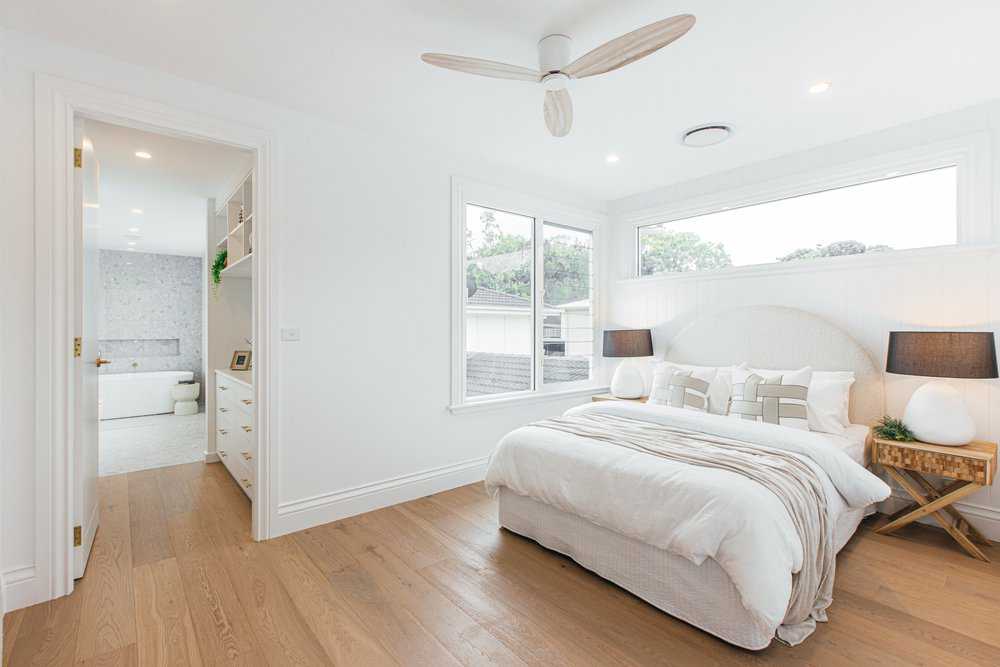
ENHANCING HOME ENTRYWAYS FOR BETTER ACCESS
Your home’s entryway is the first thing guests see when they visit, so it’s crucial to make it inviting and accessible for everyone. With a little thoughtful design, you can create an entryway that’s both stylish and functional, without any tricky obstacles or potential hazards.
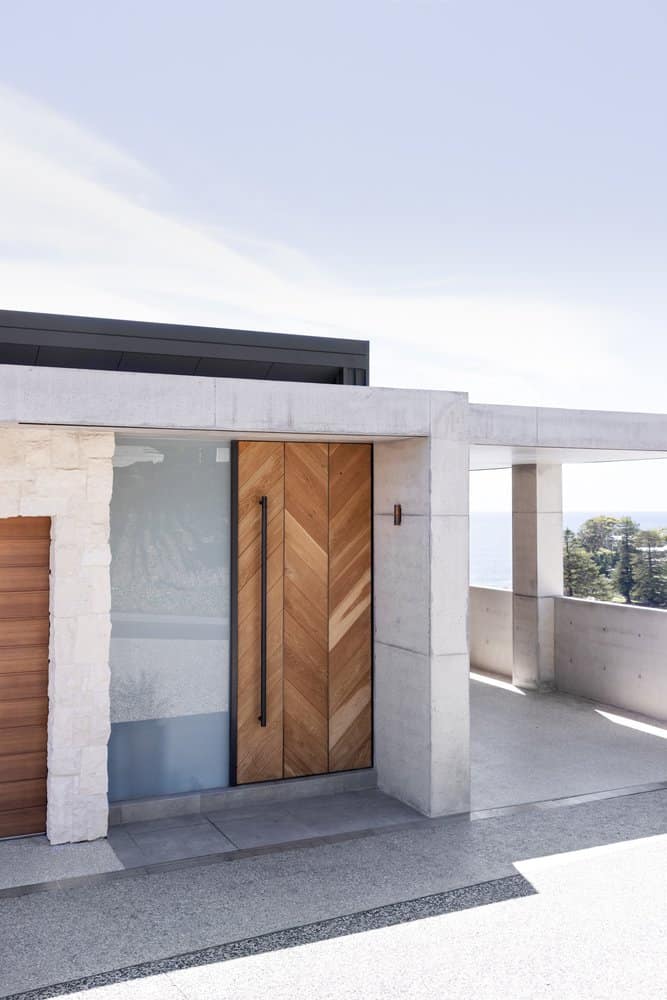
One key consideration is the use of a level, slip-resistant surface leading up to the front door. This might include installing a ramp or creating a gradual slope to eliminate any steps or thresholds that could pose a tripping hazard.
An entryway is more than just a place to hang your hat. It’s the first impression of your home, so why not make it a good one?
And don’t forget about flow – you want a clear path from the front door to the heart of your home. With a little thoughtfulness, your entryway can set the tone for a warm and accessible welcome.
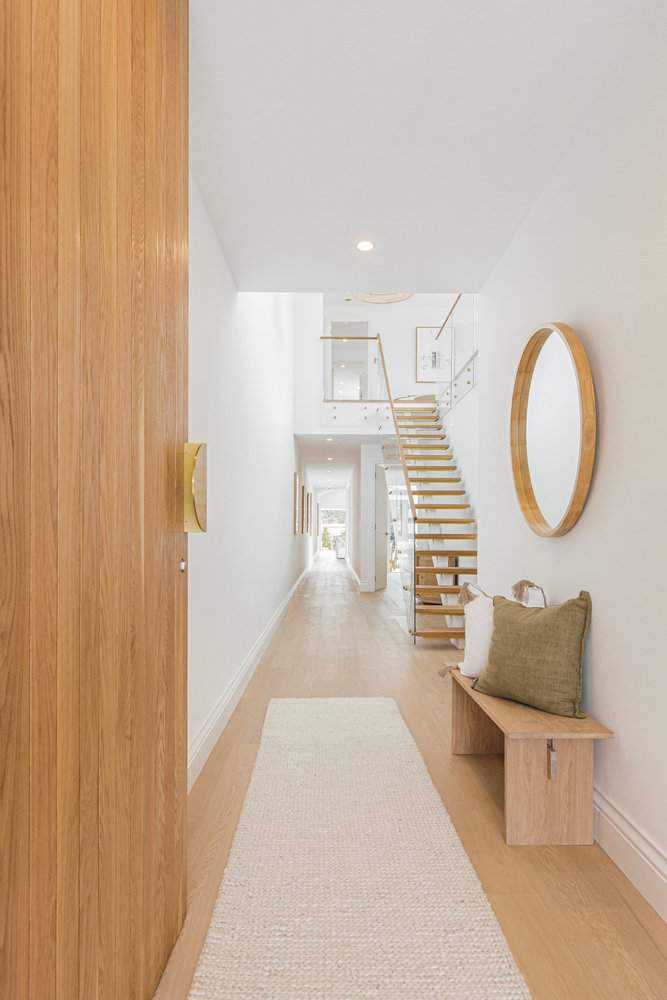
ADDRESSING SOCIAL ISOLATION THROUGH DESIGN
Social isolation is a growing concern for older adults, particularly those who live alone or have limited mobility.
Loneliness and lack of social interaction can have serious impacts on both physical and mental health, making it an important issue to address in any age-friendly home design.
One way to combat social isolation through design is to create spaces that promote social interaction and engagement. This might include incorporating open floor plans that allow for easy conversation and movement between rooms, as well as creating dedicated spaces for hobbies and activities that encourage social interaction.
Another approach is to design homes that are well-connected to the broader community. This might include incorporating features like large windows or balconies that provide views of the surrounding neighborhood, as well as creating outdoor spaces that encourage interaction with neighbors and passersby.
Picture this: a home where older adults can move about freely, without fear of tripping or falling. A place where they can host dinner parties, pursue hobbies, and enjoy quiet moments of reflection.
That’s the power of age-friendly design, it doesn’t just make homes accessible, it makes them livable, in every sense of the word.
Key Takeaway:
Universal design is changing Aussie homes, making them accessible for everyone. It’s about wide doors, step-free entries and open plans that work for all ages.
Aging in place is big among older Aussies. They want to stay home, needing designs that boost independence and community vibes. Kitchens need lower benches and smart tech to keep them safe and usable as we age.
Bathrooms should be slip-proof with walk-in showers so everyone can use them safely. Smart tech like automated lights can make homes safer for the oldies.
Good lighting reduces falls. Outdoor spaces must be easy to get around in too. Pick flooring that won’t trip you up or make it hard to move around on. Bedrooms on the ground floor are a win for safety and ease of access.
Create entryways without tripping hazards, welcoming everyone into your home smoothly. To fight loneliness, design homes that encourage chats and connections both inside and out.
CATHY’S WRAP
Aging in place house designs are all about creating a home that grows with you. A space that’s not just beautiful, but functional and supportive too.
Imagine a home that’s designed with your changing needs in mind, from spacious entryways to single level living. These carefully considered features enable you to embrace life to the fullest, regardless of your age or mobility.
So whether you’re building from scratch or renovating your current space, remember: aging in place is all about embracing comfort, safety, and independence. With the right design choices, you can create a home that truly stands the test of time.
NOTE
While every effort is made to ensure that the information contained within this article is accurate and up to date, Slater Architects makes no warranty, representation or undertaking whether expressed or implied, nor does it assume any legal liability, whether direct or indirect, or responsibility for the accuracy, completeness, or usefulness of any information.
Cathy Slater: MAM (Arch) AIA
Director / Owner


